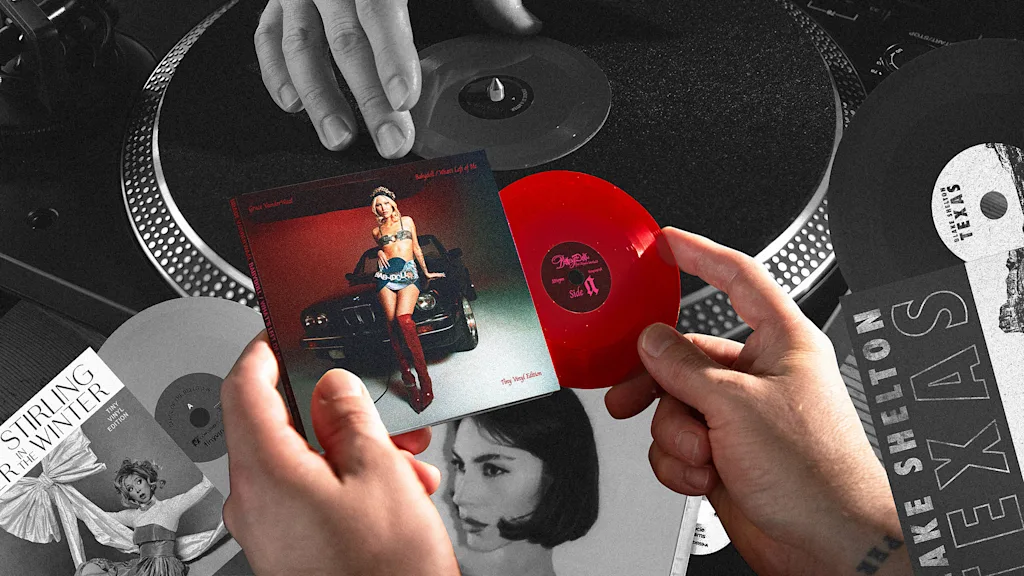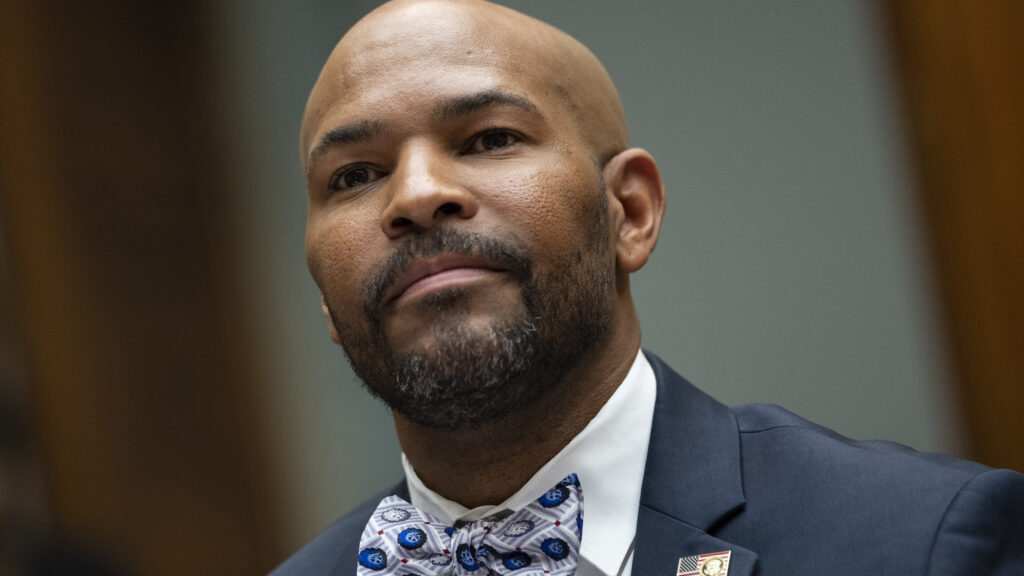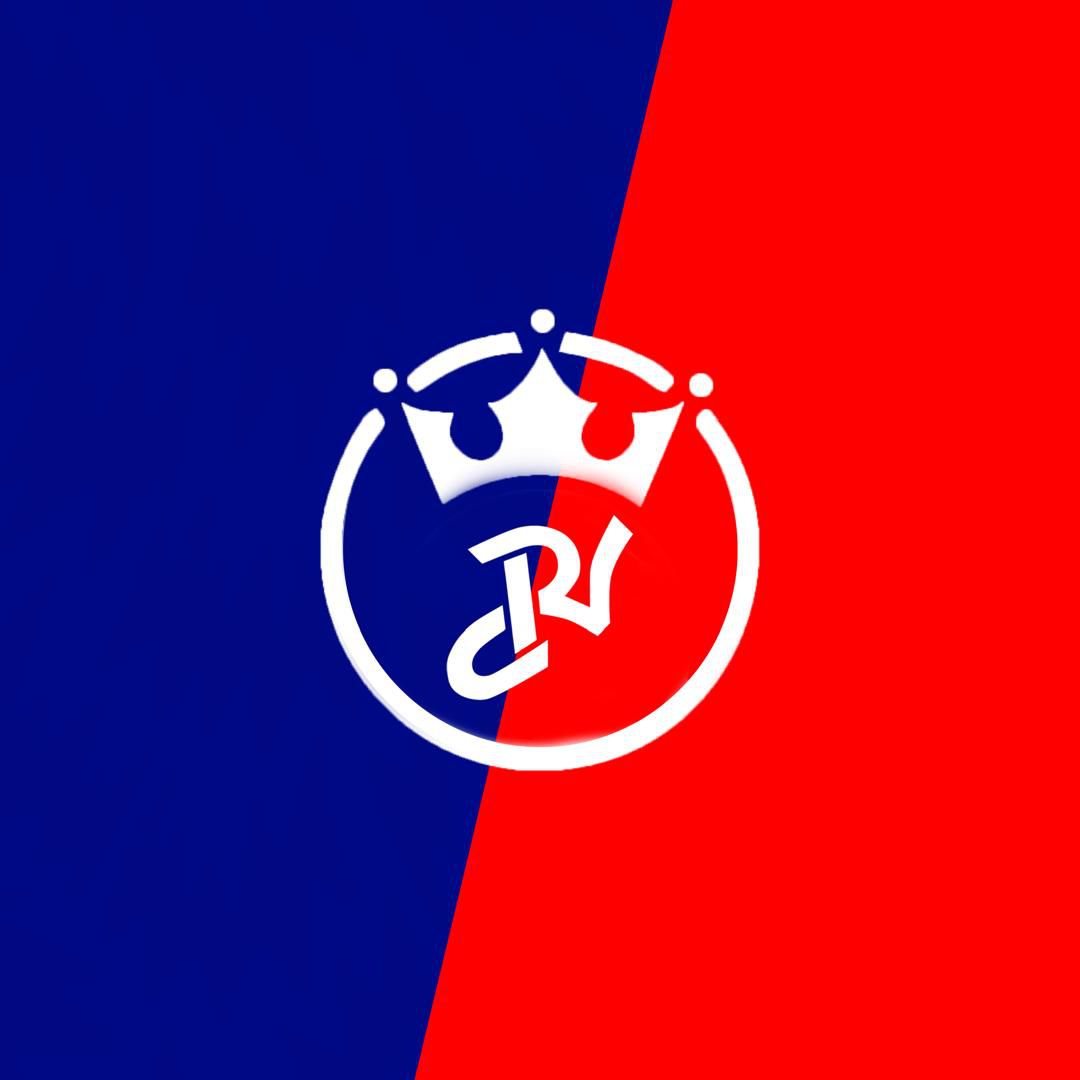
It’s the size of a coaster and looks like a toy, but when the needle hits its groove, it’s immediately clear that Tiny Vinyl is exactly what its name suggests: a tiny vinyl record. Measuring just four inches in diameter, it’s a miniaturized version of the familiar 12-inch records that have existed in one form or another for more than 130 years, and just as playable. Shrinking the record down to pocket size is an unexpected evolution for this old technology, but starting later this month this new take on an old concept will be hitting stores nationwide.
Tiny Vinyl, the Nashville-based company behind this concept, has more than half a million small records coming off the presses for an exclusive retail partnership with Target. More than 40 tiny records will be released in the next two months, with a mix of contemporary artists and well-known rereleases. New acts like Doja Cat, Chappell Roan, and Doechii stand alongside throwbacks like 1999-era Britney Spears, early hits from the Rolling Stones, and Christmas singles from Frank Sinatra. Each will retail for $14.99, and, like 45 RPM singles, will include one song on each side.
The idea was born two years ago when toy industry veteran Neil Kohler was thinking of new ways to expand the universe of one of the toys he’d helped bring to market. Toymaker Funko has seen massive global success with its Pop! line of collectible pop culture figurines. Kohler noticed how many of the company’s best-selling figurines were musical acts, and thought it might be fun to create tiny playable records that could accompany the toys. He started socializing the idea with people in his circle in Nashville and got talking with Jesse Mann, who’s had a long career managing bands and putting on music festivals. He thought the tiny record idea could stand on its own.
The two reached out to Nashville Record Pressing, a vinyl production facility that opened in Nashville in 2022. They found that it was technically possible to create tiny playable records, small enough to fit in a pocket but big enough to hold up to four minutes of audio. That’s more than enough for most artists today. “Thanks to Spotify and other trends in music generally, the average length of a song is getting shorter and shorter,” Kohler says.
Subscribe to the Design newsletter.The latest innovations in design brought to you every weekday
Privacy Policy
|
Fast Company Newsletters
And thanks to Spotify and other trends in music, the experience of listening to music has become increasingly digital in recent years. That’s also led to a hunger among some listeners for a more analog or physical connection to music, whether in the form of records or compact discs or even cassette tapes. From a revenue and fan building perspective, there’s also a growing interest among bands and record companies to physically get music into the hands of fans however they can. Tiny Vinyl is a new way to do just that.
After soft launching the format on merchandise tables for a few touring indie artists last year, Kohler and Mann saw enough demand from both artists and fans to start thinking bigger. Last fall they partnered with Urban Outfitters for a limited release by violinist Lindsey Stirling. It sold out within the first day. Kohler reached out to contacts at Target that he had from his toy industry days and the ball got rolling on what would become an even bigger retail launch.
The vinyl resurgence
The partnership comes at an interesting time for vinyl records. Despite the age of the technology and its seeming replacement by tapes, CDs, and streaming, records are surprisingly resilient. More than 55 million vinyl records were sold in the U.S. in 2024, up from about 13 million in 2016.
Oddly, many of those sales are to people who aren’t actually listening to the records. A report from 2023 found that 50% of vinyl record buyers do not have turntables on which to play them. “They never even open the shrink on the vinyl,” says Kohler.
These collector-fans are not the market Tiny Vinyl is chasing, or at least not the only one. Kohler sees the small records his company is producing as a new music format, less skippable than a streaming service but easier to engage with than a full-length record. “We’re trying to create more of a digestible vinyl experience, and hopefully bring people into the vinyl medium with a couple of songs at a pretty accessible price point,” he says.
Mann, the music industry veteran, says the shrinking of the record has appeal on both sides of the merch table, giving bands another revenue-generating way to engage with fans, and giving fans an affordable takeaway alternative to a tour T-shirt that can cost upwards of $50.
advertisement
That’s why Tiny Vinyl insisted on making their mini records as similar to existing records as possible. “Being able to play on a regular turntable at the normal turntable speed, which is 33 RPM, was really important to us. If we’d made it some wacky new speed, or even 45 seemed like it was edging more into the exotic space,” Mann says.
Being new while also being familiar led the company to mimic some of the standard elements of the record as we know it. “We number each edition on the spine of the record. We put them in authentic gate-fold mini album jackets, just like a 12-inch vinyl, and it has a mini inner sleeve,” Kohler says. “It’s scaled proportionately to be just like a 12-inch vinyl with a mini label in the center on each side.”
A new form factor
One downside of Tiny Vinyl’s tiny size is that some record players, especially old ones, can’t actually play them. The tone arms on these older machines are designed to automatically stop right about where a Tiny Vinyl starts, which is where a conventional 12″ record would have its printed label. Some record players have the option to disable this auto-stop feature, but older and lower-end players are just not compatible.
But for those with record players that can handle them, playing a Tiny Vinyl is remarkably similar to the experience of a standard 12-inch record, from pulling it out of the sleeve to plopping it on the turntable to watching it spin as the needle drops down. Just like vinyl, but tiny.
Easy to conceptualize, but as it turns out, not so easy to create. Kohler says he and Mann worked with Nashville Record Pressing for more than year to figure out how to make such a small record play correctly. The closer to the center of a record, the smaller its grooves become to maintain a uniform playback speed. Cramming that into the space of a record just four inches across took some extra effort.
“The physics of playing vinyl at that scale were not trivial to overcome,” says Kohler. “It’s not rocket science, but it’s nontrivial, and we’ve got a patent submission to try and protect that.”
Its main problem solved, the company has its eyes on expansion, accepting orders from big name acts as well as indie groups looking to augment their touring merch. They’re even looking beyond just making tiny records. One obvious next step: tiny record players. Kohler and Mann wouldn’t say when something like that might be available, but tiny record collectors may soon have another item to add to their hi-fi setup. “We are in development on those things now,” Kohler says.



